Long before the concept of design itself was coined, architect and artist Josef Hoffmann laid the foundations for it by combining aesthetic and scientific approaches. The design principles of upholstered furniture combined the two sciences of orthopaedics and material resistance.
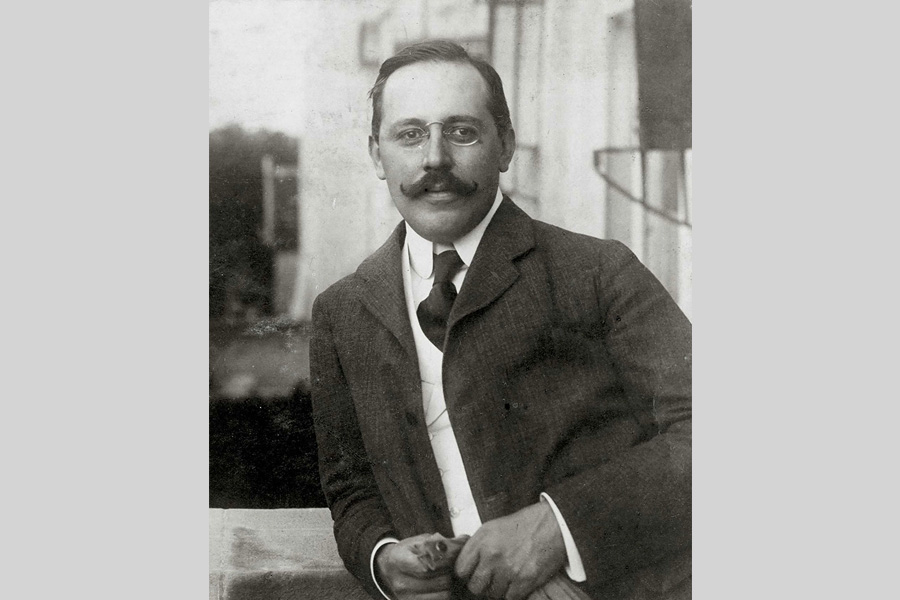
Josef Hoffmann, 15.12.1870 – 07.05.1956, photo from 1903.
It is well known that comfortable and properly designed furniture helps people to relax, supports their posture and supports the musculoskeletal corset. It is well known that furniture installed without ergonomic principles can cause serious damage to the human body – from simple discomfort to spinal disorders. By the way, it was the illness of a close friend that motivated Josef Hoffmann to take up furniture design. In 1905, he created a Sitzmaschine (seating machine) specifically for his friend who, due to a spinal injury, was unable to move independently.

Chair Sitzmaschine. 1905
Today, this furniture design is considered a classic, an iconic object. At the beginning of the last century, it was an avant-garde invention, both functionally and aesthetically. The Sitzmaschine chair is a furniture design manifesto that so clearly and vividly expresses the basic design concept: the expression of function through aesthetics. With an emphasis on sitting comfort and keeping the body in a comfortable position, Hoffmann aims to give this almost medical device an attractive, artistic quality. The chair is equipped with a retractable footrest and the backrest locks into five different positions, giving the person maximum choice when sitting for long periods of time. The styling of this item draws on the Art Nouveau style that was fashionable at the time, but in a more restrained, geometric version. Laconism in furniture design and in the colour palette of the finishes would become Hoffmann’s trademark.
Before becoming one of the founders of the famous Vienna Secession, Hoffmann received a very serious and multidisciplinary education. He began his studies at the State School of Architecture and Industry in Brno, a popular institution at the time that trained masters in one of the most sought-after fields of art – painters for the growing industry. He went to Vienna to train as an architect under Otto Wagner, who was teaching at the Academy of Fine Arts at the time. The Fine Arts Academies in Vienna and Munich were the next stage of his studies, not only in painting, but also in jewellery art, to which he devoted much of his creative energy and ideas.
His work in an architectural studio under the famous Otto Wagner led him to the idea of a new style based on pan-European Art Nouveau – the Vienna Secession. In 1900, Josef Hoffmann designed the Vienna Secession hall at the Paris International Fair. Later, however, he was drawn to working with objects: furniture, jewellery, interior decoration and table settings.
In 1903, together with Karl Moser, Fritz Werndorfer and Karl Otto Ceszka, Hoffmann founded the art and industrial association Vienna Workshops. He formulates their main objective as ‘to establish a close and cordial relationship between buyer, designer and manufacturer in order to create high-quality, simple objects for the home’. The workshops produced furniture, designed jewellery and textiles, worked metal, leather and glass. For designers, the workshops become not just a production base, but rather a research and experimental base. Here, Hoffmann continues to research the physical properties of materials, transferring them to the decorative field. It is here that the world-famous twentieth-century Neoclassical style was born. Taking the Biedermeier tradition as a starting point, the craftsmen reinterpreted it into a new aesthetic with perfect brilliance. It was there that new forms of crockery, furniture and decoration were born. It was here that the principle of combining restrained forms and luxurious workmanship was formulated – future art deco only had to pick up on this style. Like the masters of the Italian Renaissance, Hoffmann and his colleagues were simultaneously involved in several fields of creativity, creating the idea of a synthesis of the arts. In 1908, he designed and built a wooden exhibition complex in Vienna, where they demonstrated their idea of a general harmony of the arts, combining ceramics, sculpture, textiles, glassware, paintings, drawings and prints.
In 1910, Hoffmann creates a design that will be unique for its time and iconic for you and me – the Kubus chair. The strong, static, status model is distinguished by its austere geometric forms and looks as if it is composed of numerous cubes. This new piece of furniture was presented at an international exhibition in the Argentine capital in 1910 to mark the centenary of the country’s capital. In 2010, to celebrate the 100th anniversary of the Kubus chair, Witmann prepared a special edition of the model in black or chocolate brown waxed aniline leather upholstery.
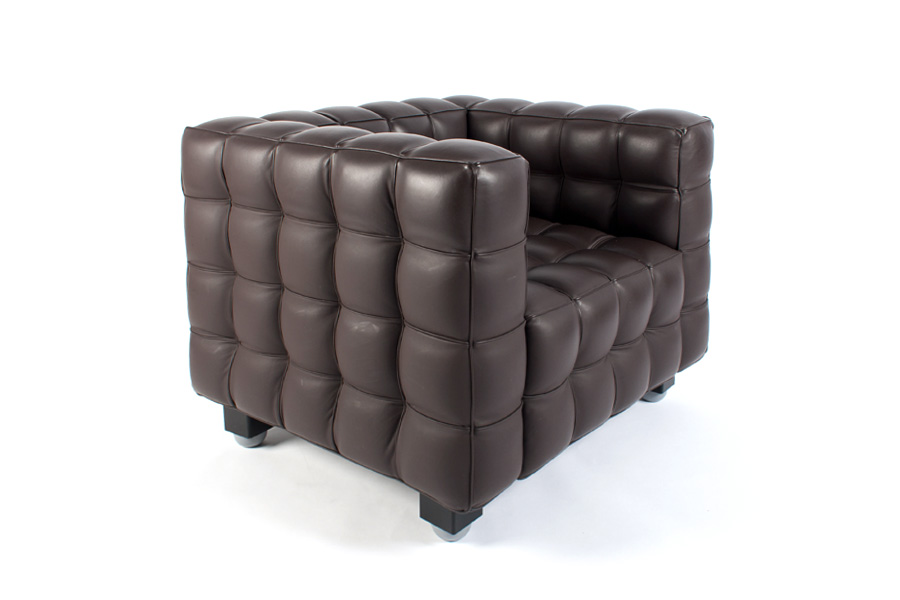
Kubus armchair in dark brown leather. Manufactured by Wittmann. 1990.
Hoffmann, already a well-known architect and furniture designer, creates another legendary project: a set of upholstered furniture for the Alleegasse music room in Dr Hugo Koller’s Vienna city flat. The famous set includes semi-circular armchairs and a small sofa with a coquettishly curved backrest. The artistic image of the set continues the theme of graphics and minimalism: the laconic shape of the contours shows the prevailing functionalism of the furniture, revealing its essence, while the black and white graphics of the upholstery and wooden frame lend sophistication and a kind of intellectualism to the image. Today, this collection in the Wittmann factory version is called Recreation Hoffmann and is the company’s best-selling work.
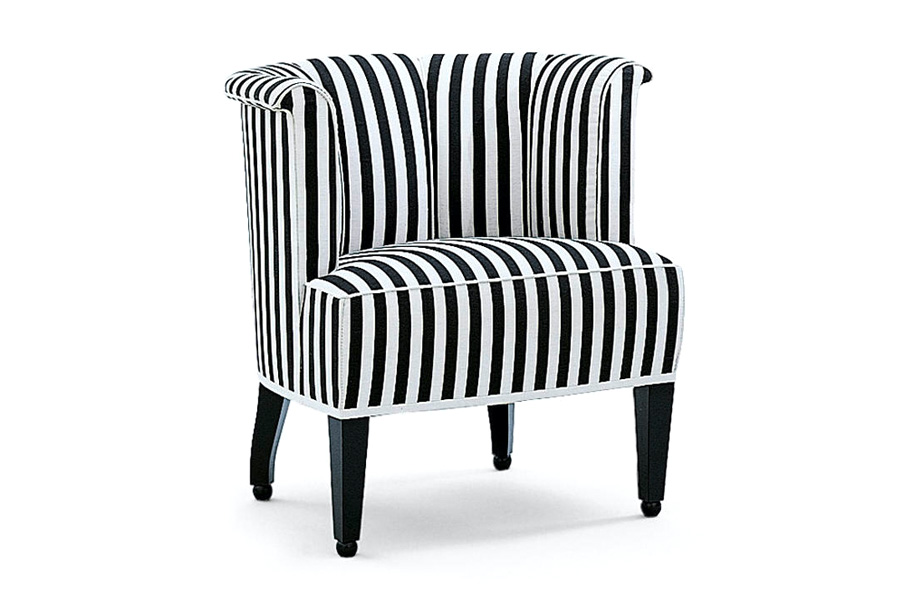
Armchair from the Alleegasse music room upholstery set
For another friend of his, Dr Salzer, Hoffmann designs and furnishes a suite entirely from his own sketches. The study set, consisting of a sofa, two armchairs and a table, is in a cubist style. Once again, the graphic quality of the workmanship is evident – the black wooden frame contrasts with the snow-white upholstery, emphasising the serenity of the piece.
An even more graphically striking model, the Bar Stool, was created slightly earlier, but is still produced by the Wittmann factory today. In today’s collection it is called the Fledermaus Chair and was originally created by the master in 1907 specifically for a cabaret in Vienna. Its frame is also made of wood in black. The extendable legs and decorative rounded details are typical elements of Hoffmann’s style.
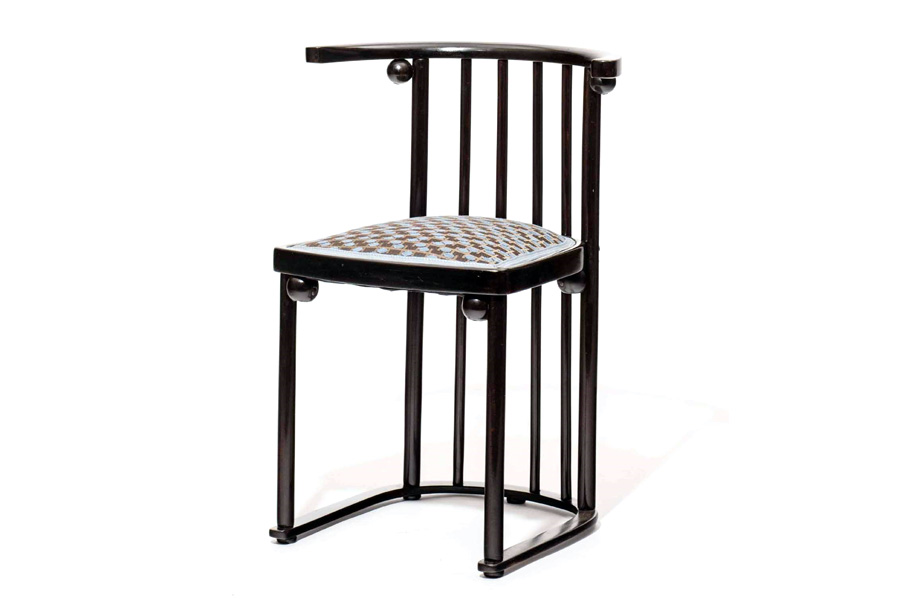
Fledermaus Chair. Specially designed in 1907 for the Fledermaus cabaret in Vienna.
It was later produced by the Kohn bentwood company.
His later works, such as the furniture for the villa of the Gallia family in Vienna or the furniture for the Koller house, have more subdued and softened forms, more decorative images. Here, he actively uses and quotes classical elements of furniture design: he combines curved armrests and rounded backrests to create a uniform and comfortable seat.
In 1931, he is commissioned to renovate the Westend Sanatorium in Purkersdorf, where he furnishes the main rooms with furniture according to his own designs. This armchair on a plywood frame combined with black leather trim was made for the music room at the sanatorium and shows us the transition from the classical style and its Biedermeier continuation to the new style, Art Nouveau or Art Nouveau.
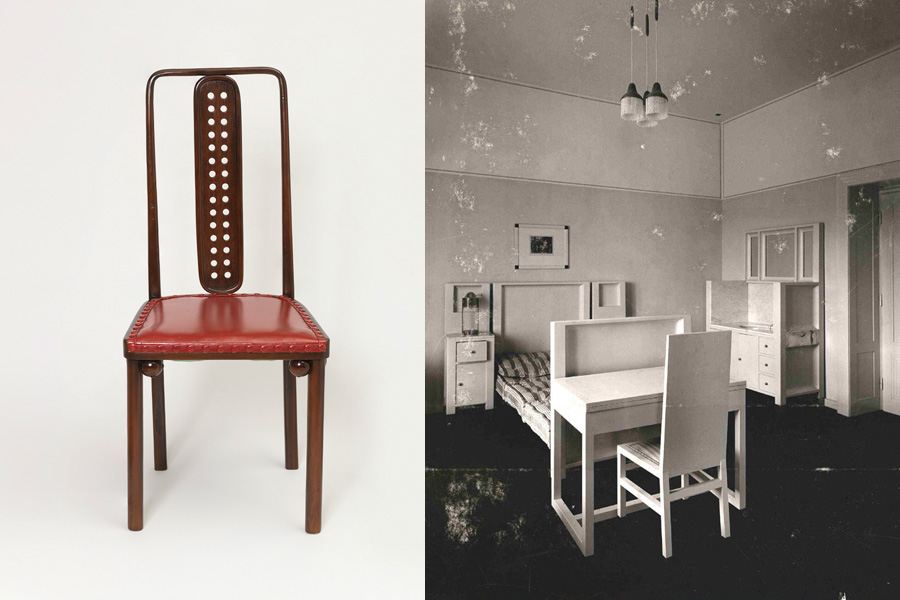
Chair from the sanatorium in Purkersdorf. The interior of the sanatorium
At the same time, Hoffmann builds the Stoclet Mansion in Brussels and installs a collection of leather furniture with a deep, comfortable fit. To this day, all the models created by Josef Hoffmann over several decades for connoisseurs of beautiful interiors are reissued and gain new fans of his talent, the talent of a great artist and scholar.
Text: © Ksenia Bandorina, PhD in art history, associate professor at the A.L. Stieglitz State Academy of Art and Industry
Source: St. Petersburg Designers’ Association
Title image: Hoffmann Egg Rocking Chair – punchtheclock.com




